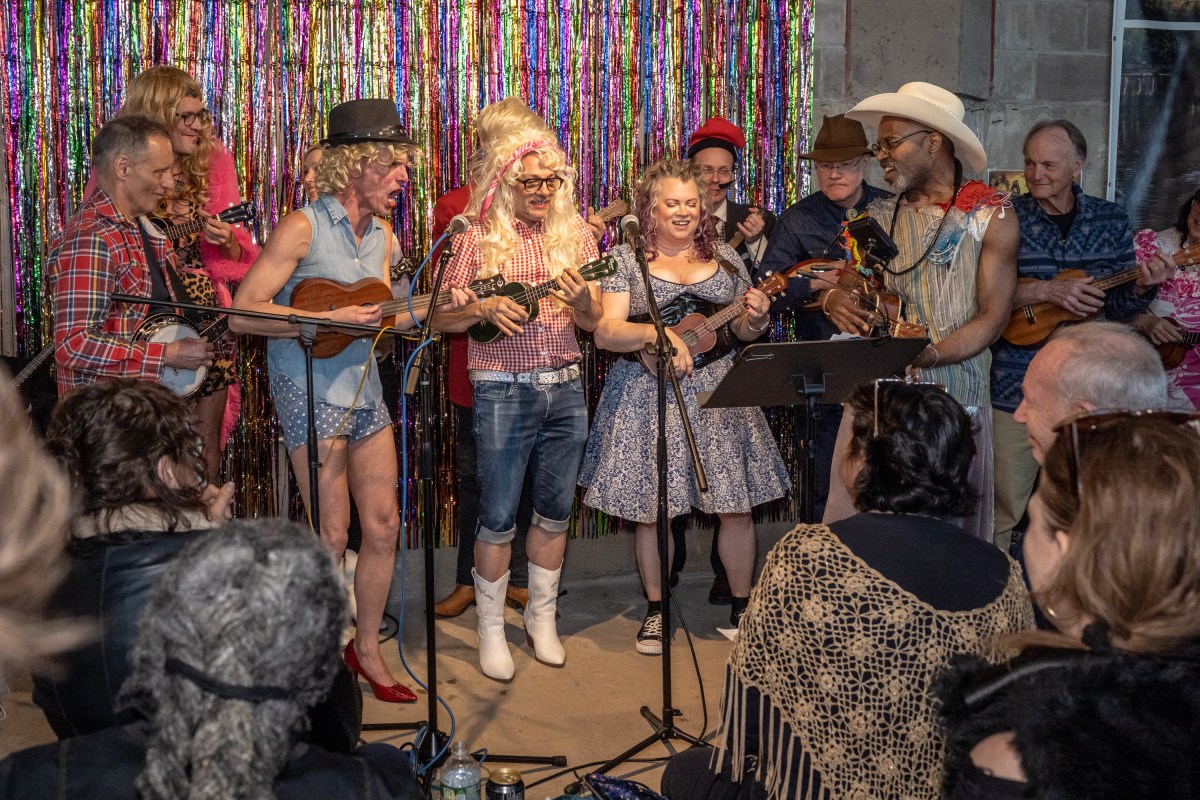‘Fiddler on the Roof’ runs through Sept. 2 at Museum of Jewish Heritage, 36 Battery Place, nytf.org.
“Fiddler on the Roof” lyricist Sheldon Harnick should shep naches — or derive pride — from this new production. So would his late collaborators, Jerry Bock and Joseph Stein, if they were here to see it.
The National Yiddish Theatre Folksbiene, one of the world’s best-known Yiddish theater companies, is presenting “Fiddler” in Yiddish (accompanied by English and Russian supertitles) at the Museum of Jewish Heritage in Battery Park City. The beloved 1964 musical returns to New York less than two years since “Fiddler on the Roof” last played Broadway.
The translation, which debuted in Israel half a century ago and is now receiving its U.S. premiere, is more than appropriate given that “Fiddler” is based on the Yiddish folk tales of Sholem Aleichem, and the villagers of Anatevka would have spoken Yiddish.
Many people probably know “Fiddler” so well that they have no need to look at the supertitles in order to follow the story. Nevertheless, the supertitles are interesting because they do not always reflect the original English lyrics. For instance, “If I Were a Rich Man” now reads “If I Were a Rothschild,” referencing the wealthy and prominent Jewish family of the period.
Serving as director is Broadway icon Joel Grey, who won fame as the mysterious Emcee in “Cabaret” while the original “Fiddler” was playing on Broadway. Aside from being performed in Yiddish, this is not so different from a well-acted regional theater production of “Fiddler.”
The cast mixes Broadway veterans with a few performers who have prior Yiddish theater experience. Comedienne Jackie Hoffman (“On the Town,” “Hairspray”) plays Yente the Matchmaker, while Steven Skybell (the butcher Lazar Wolf in the recent Broadway revival) graduates to playing the larger-than-life Tevye.
The production values are minimal, with no scenery except for a few hanging banners and basic props. A 12-piece orchestra sits at the back of the stage. Even though the space is rather cramped, the original Jerome Robbins dance choreography is efficiently reproduced. One unexpected touch is the addition of “Any Day Now,” a song written for the 1971 film version.
The ticket price includes admission to the museum, allowing audience members to explore exhibits on the Jewish experience before and during the Holocaust.
Considering that “Fiddler” brings to life a Jewish community that was ripped apart due to violent anti-Semitism, the musical enriches the museum and the museum enriches the musical. As Yente would say, it’s a perfect match.

















